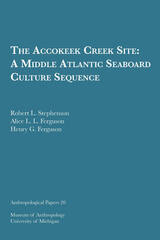
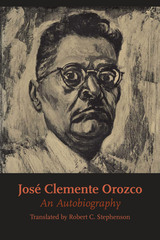
The artistic eminence of José Clemente Orozco (1883–1949) is such that he has been called “the greatest painter the Americas have produced.” In his Autobiography he also attains literary distinction. He is a writer who recounts the history of his period from a personal point of view and yet scarcely mentions himself. He is an observer who writes about the history of his country and of his country’s art, yet makes his own character implicit in the narrative.
The character that emerges is charming. It is that of a man strong but retiring, sharply critical of what he disapproves yet generous in praise of what he admires, decided in his views but modest in his assumptions and given to understatement in describing his own activities, averse to war and political struggle yet eager for conflict of ideas, always dedicated to the welfare of humanity.
Through the details of day-by-day living, he presents the panorama of the Mexican Revolution and of events in other parts of the world to which he traveled. His is a personal story of the Revolution, giving his reactions (as those of any common man) to the barbarities of war: “Insolent leaders, inflamed with alcohol, taking whatever they wanted at pistol point. . . . By night in dark streets the sound of gunplay, followed by screams, blasphemies, and vile insults. Breaking windows, sharp blows, cries of pain, and shots again.”
Orozco’s ability, as a painter, to see the details and to sense the mood of a place is apparent in his word pictures of the places he visited: “After six in the evening Paris is an immense brothel.” “London was like the seat of a noble family which had been exceedingly rich but had lost its fortune.” “Old, old Montmartre [is] a moldering cadaver . . .”
Orozco also makes some penetrating observations on art itself. Although he emphasizes individuality and freedom from tradition in art, he abhors unschooled art, especially such extremes as primitive Impressionism and other groups that lack instruction in the general principles of art, in technique, in theory of color, in perspective. He says ironically of the artistically uneducated: “Blessed are the ignorant and the imbecile, for theirs is the supreme glory of art! Blessed are the idiots and the cretins, for masterpieces of painting shall issue from their hands!” Orozco believes in education, not only for the artists but for their public. Taste in art can come only through understanding of the purpose and the techniques of art—through knowledge. Without training, public taste “mostly likes sugar, honey, and candy. Diabetic art. The greater the amount of sugar, the greater the—commercial—success.”
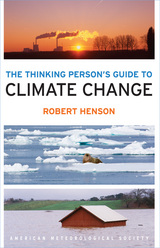
Using global research and written with nonscientists in mind, the Guide breaks down the issues into straightforward categories: “Symptoms” covers signs such as melting ice and extreme weather, while “Science” lays out what we know and how we figured it out. “Debates” tackles the controversy and politics, while “Solutions” and “Actions” discuss what we can do as individuals and communities to create the best possible future. Full-color illustrations offer explanations of everything from how the greenhouse effect traps heat to which activities in everyday life emit the most carbon. Special-feature boxes zoom in on locations across the globe already experiencing the effects of a shifting climate.
The Thinking Person's Guide to Climate Change combines years of data with recent research, including conclusions from the Fifth Assessment Report of the Intergovernmental Panel on Climate Change. This reference provides the most comprehensive, yet accessible, overview of where climate science stands today, acknowledging controversies but standing strong in its stance that the climate is changing— and something needs to be done.
The Thinking Person's Guide to Climate Change is a full update and revision of Robert Henson’s The Rough Guide to Climate Change and is now published through the American Meteorological Society, with distribution through University of Chicago Press.
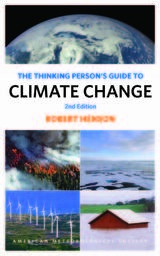
Using global research and written with nonscientists in mind, the Guide breaks down the issues into straightforward categories: “Symptoms” covers signs such as melting ice and extreme weather, while “Science” lays out what we know and how we figured it out. “Debates” tackles the controversy and politics, while “Solutions” and “Actions” discuss what we can do as individuals and communities to create the best possible future. Full-color illustrations offer explanations of everything from how the greenhouse effect traps heat to which activities in everyday life emit the most carbon. Special-feature boxes zoom in on locations across the globe already experiencing the effects of a shifting climate.
The new edition of The Thinking Person's Guide to Climate Change has been thoroughly updated, including content on new global record highs, new research across the spectrum, and the Paris Agreement to cut greenhouse gases. This reference provides the most comprehensive, yet accessible, overview of where climate science stands today, acknowledging controversies but standing strong in its stance that the climate is changing—and something needs to be done.
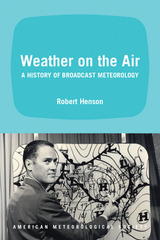
From low humor to high drama, TV weather reporting has encompassed an enormous range of styles and approaches, triggering chuckles, infuriating the masses, and at times even saving lives. In Weather on the Air,meteorologist and science journalist Robert Henson covers it all—the people, technology, science, and show business that combine to deliver the weather to the public each day.
The first comprehensive history of its kind, Weather on the Air explores the many forces that have shaped weather broadcasts over the years, including the long-term drive to professionalize weathercasting, the complex relations between government and private forecasters, and the effects of climate-change science and the Internet on today’s broadcasts. Dozens of photos and anecdotes accompany Henson’s more than two decades of research to document the evolution of weathercasts, from their primitive beginnings on the radio to the high-gloss, graphics-laden segments we watch on television every morning.
This engaging study will be an invaluable tool for students of broadcast meteorology and mass communication and an entertaining read for anyone fascinated by the public face of weather.
READERS
Browse our collection.
PUBLISHERS
See BiblioVault's publisher services.
STUDENT SERVICES
Files for college accessibility offices.
UChicago Accessibility Resources
home | accessibility | search | about | contact us
BiblioVault ® 2001 - 2024
The University of Chicago Press









